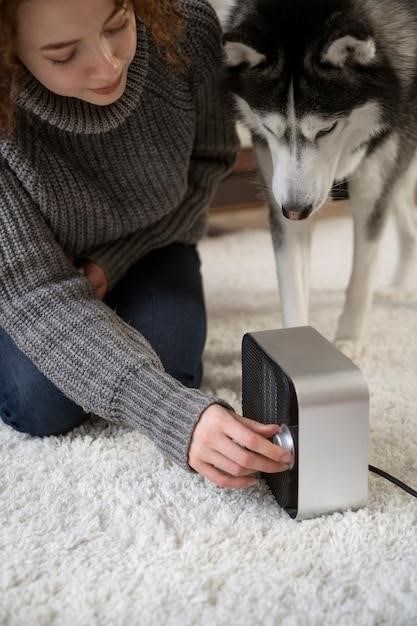Manual Transmission Stuck in Gear⁚ Common Causes and Solutions
A manual transmission stuck in gear can be a frustrating experience, but it’s often a solvable problem. This issue can stem from a variety of causes, ranging from minor inconveniences like clutch problems to more complex internal transmission issues. Understanding the potential causes and their corresponding solutions can help you diagnose and potentially fix the problem yourself or guide you to seek professional help.
Introduction
The manual transmission, a hallmark of driving enthusiasts, offers a direct connection to the vehicle’s powertrain, allowing for a more engaging and controlled driving experience. However, this mechanical marvel can sometimes encounter issues, leading to frustrating situations where the transmission becomes stuck in a gear. This predicament can be a source of anxiety for drivers, especially if they’re unfamiliar with the intricacies of manual transmissions.
A manual transmission stuck in gear can manifest in various ways. It might be difficult to shift into a specific gear, or the shifter might feel loose and unresponsive. In some cases, the car might even refuse to move despite the engine running and the clutch engaged. Understanding the underlying causes of these problems is crucial for addressing them effectively.
This article delves into the common reasons behind a manual transmission becoming stuck in gear, providing insights into potential solutions. From examining simple issues like clutch problems and transmission fluid levels to exploring more complex internal transmission malfunctions, we aim to equip you with the knowledge to diagnose and potentially resolve this issue. Whether you’re a seasoned manual transmission driver or a curious newcomer, understanding these causes and solutions will enhance your understanding of this essential component of your vehicle.
Clutch Problems
The clutch is a critical component in a manual transmission system, acting as the intermediary between the engine and the transmission. When you depress the clutch pedal, it disengages the engine from the transmission, allowing you to shift gears smoothly. A malfunctioning clutch can significantly hinder your ability to shift gears effectively, leading to the transmission becoming stuck.
One common clutch problem that can cause shifting issues is a clutch that isn’t fully disengaging. This could be due to a worn clutch plate, a problem with the hydraulic system that operates the clutch, or even a faulty clutch cable. A partially disengaged clutch can make it difficult to shift gears, as the engine is still partially connected to the transmission, creating resistance.
Another clutch-related issue is a slipping clutch. This occurs when the clutch plate is worn or contaminated, reducing its ability to grip the flywheel effectively. As a result, the engine can rev up, but the car doesn’t accelerate smoothly. A slipping clutch can also make it difficult to shift into a gear, as the engine speed and transmission speed are not synchronized.
If you suspect clutch problems, it’s essential to have your vehicle inspected by a qualified mechanic. They can diagnose the specific issue and recommend the necessary repairs. A faulty clutch can lead to more significant damage if left unchecked, so addressing it promptly is crucial.
Transmission Fluid Issues
Transmission fluid plays a crucial role in the smooth operation of a manual transmission. It acts as a lubricant, reducing friction between moving parts and ensuring proper gear engagement. Low transmission fluid levels or contaminated fluid can lead to various problems, including difficulty shifting gears and even transmission failure.
When transmission fluid levels are low, the gears may not be adequately lubricated, leading to increased friction and wear. This can make shifting difficult and cause a grinding noise. If the fluid is contaminated with debris or water, it loses its lubricating properties and can cause damage to internal components, further exacerbating shifting problems.
Regular transmission fluid checks and changes are essential for maintaining the health of your manual transmission. The frequency of fluid changes varies depending on the vehicle’s make and model, but generally, it’s recommended to change the fluid every 30,000 to 60,000 miles. You should also check the fluid level periodically, particularly if you notice any shifting issues.
If you suspect low transmission fluid levels or contamination, it’s best to have your vehicle inspected by a mechanic. They can assess the fluid condition, top it off if necessary, or perform a complete fluid change to ensure optimal transmission performance.
Worn Synchronizers
Synchronizers are crucial components within a manual transmission responsible for smoothly engaging gears. They use friction cones to match the speed of the input and output shafts before allowing gear engagement, preventing grinding and damage. As these synchronizers wear down over time, their ability to match speeds effectively diminishes, leading to various shifting issues.

When synchronizers wear out, you might encounter difficulty shifting into specific gears, particularly higher gears. You may also notice a grinding noise when attempting to engage these gears, as the gears are forced together before they’re properly synchronized. In severe cases, the transmission might get stuck in a particular gear, making it impossible to shift to another gear.
If you suspect worn synchronizers, it’s crucial to address the issue promptly; Neglecting it can lead to further damage to the transmission, ultimately requiring a more expensive repair. Replacing worn synchronizers involves a significant amount of labor and requires disassembling the transmission, making it a relatively costly repair.
To avoid premature wear, it’s important to maintain proper transmission fluid levels and follow the recommended fluid change intervals. Using a high-quality transmission fluid can also help prolong the lifespan of the synchronizers and minimize wear and tear.
Shift Linkage Problems
The shift linkage is the mechanical connection between the shifter in the cabin and the transmission itself. It’s responsible for translating the driver’s shift lever movements into gear selections within the transmission. When this linkage malfunctions, it can directly affect the transmission’s ability to shift gears properly, potentially leading to getting stuck in a gear.
Common shift linkage problems include worn or broken linkage components, loose or misadjusted cables, or a bent or dislodged shift lever. These issues can cause a variety of symptoms, including a stiff or difficult shifter, a loose or sloppy shifter, or a shifter that doesn’t move into certain gears at all.
To diagnose a shift linkage problem, you can inspect the linkage for any visible signs of wear or damage. You can also try moving the shifter while observing the linkage under the hood to see if it’s moving correctly. If you suspect a linkage issue, it’s best to consult with a mechanic for a proper diagnosis and repair.
Fortunately, shift linkage problems are usually easier to address than internal transmission issues. Repairing a shift linkage often involves replacing worn or damaged components, adjusting cables, or realigning the linkage. These repairs are typically less expensive than replacing the entire transmission.
Internal Transmission Problems
While external issues like clutch problems or shift linkage malfunctions are relatively common, a stuck manual transmission can also indicate a more serious problem within the transmission itself. These internal problems can be complex and often require professional intervention for diagnosis and repair.
One potential culprit is a worn or damaged synchronizer. Synchronizers are responsible for matching the speeds of two gears before they engage, ensuring smooth gear changes. If a synchronizer is worn or damaged, it can prevent gears from engaging properly, leading to a stuck gear or grinding noises. Another potential issue is a broken or misaligned shift fork, which directly controls the engagement of gears inside the transmission.
Internal transmission problems can also be caused by debris or foreign objects in the transmission fluid. This can occur due to wear and tear or a previous repair that wasn’t properly cleaned. The debris can clog internal components, causing shifting issues.
Diagnosing internal transmission problems often requires specialized tools and expertise. If you suspect an internal transmission issue, it’s crucial to consult a professional mechanic. They can perform a thorough inspection, identify the root cause, and recommend the appropriate repair, which may involve replacing damaged components or even a complete transmission rebuild.
Troubleshooting Steps
Before rushing to a mechanic, there are a few troubleshooting steps you can take to potentially identify and resolve the issue yourself. These steps can help narrow down the problem and determine if it’s something you can handle or if professional assistance is required.
Start by checking the clutch pedal. Make sure it’s engaging properly and fully disengaging when pressed. A soft or spongy pedal can indicate a problem with the clutch hydraulics, preventing the clutch from disengaging completely. If the clutch is not disengaging properly, it can make shifting difficult or impossible.
Next, inspect the shift linkage. Look for any loose or damaged components, particularly the shift cables and the linkage connecting the shifter to the transmission. A loose or broken shift cable can cause the shifter to feel sloppy or prevent it from moving smoothly through the gears.
Finally, check the transmission fluid level. Low transmission fluid can cause shifting problems, as it lubricates and cools the internal components. Make sure the fluid level is within the appropriate range and that the fluid itself is clean and not contaminated.
These troubleshooting steps can help you determine if the problem is related to the clutch, the shift linkage, or the transmission fluid. If the issue persists after these checks, it’s recommended to seek professional help for a more comprehensive diagnosis and repair.
Professional Help
If your troubleshooting efforts haven’t yielded a solution or if you suspect a more serious internal transmission issue, it’s time to seek professional help. A qualified mechanic can perform a thorough inspection and diagnosis to pinpoint the root cause of the problem. They possess the expertise and tools to effectively identify issues that might be difficult to diagnose at home.
A mechanic can examine the clutch system, transmission fluid, and shift linkage for any malfunctions. They can also inspect the internal components of the transmission for signs of wear or damage. This comprehensive evaluation will help them determine the necessary repair steps and provide an accurate estimate of the cost involved.
Don’t hesitate to consult with a reputable mechanic if you’re unsure about the cause of the transmission issue. They can provide expert advice, perform the necessary repairs, and ensure your vehicle is back on the road safely and efficiently. Remember, addressing transmission problems promptly can prevent further damage and costly repairs in the long run.
Preventing Future Problems
While a manual transmission can provide a rewarding driving experience, proper maintenance is crucial to prevent future issues. Regular fluid changes are essential to keep the transmission operating smoothly. The recommended interval for transmission fluid replacement varies depending on the vehicle and driving conditions. Consult your owner’s manual or a qualified mechanic for the appropriate schedule for your vehicle.
Using the correct type of transmission fluid is equally important. Using the wrong type can damage the transmission’s internal components. Avoid overfilling the transmission as this can create excessive pressure and lead to leaks or other problems.
Driving habits also play a significant role in transmission longevity. Avoid harsh shifting, especially when the engine is cold. Smoothly shifting gears and using the clutch properly can extend the life of your transmission. Additionally, regular inspections of the shift linkage and clutch system can help identify potential problems before they become major issues. Taking proactive steps to maintain your manual transmission can help prevent future problems and ensure you enjoy a smooth and reliable driving experience for years to come.
Experiencing a manual transmission stuck in gear can be a stressful situation, but understanding the potential causes and solutions can empower you to take appropriate action. While some issues might require professional intervention, others can be addressed with simple troubleshooting steps. Regular maintenance, including fluid changes and inspections, plays a crucial role in preventing future problems.
Remember that addressing any transmission issues promptly is vital to avoid further damage and ensure the longevity of your vehicle. If you’re unsure about the cause or how to proceed, consulting a qualified mechanic is always recommended. By staying informed and taking proactive measures, you can keep your manual transmission running smoothly and enjoy the rewarding driving experience it offers.


















